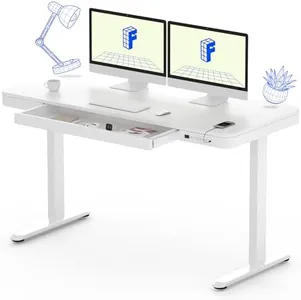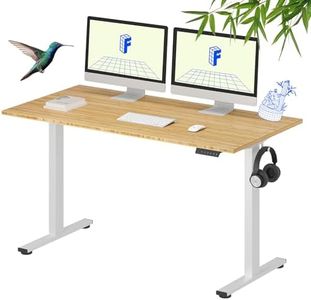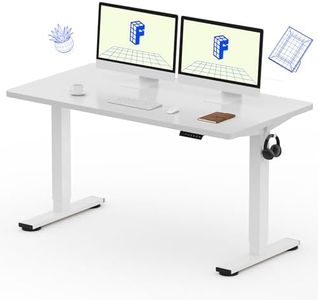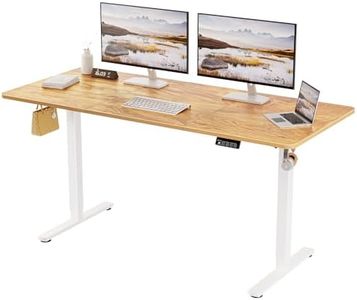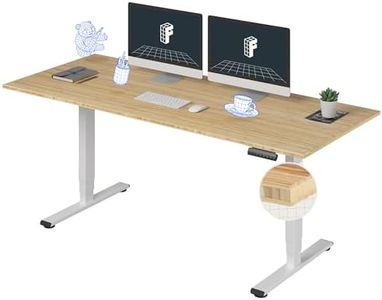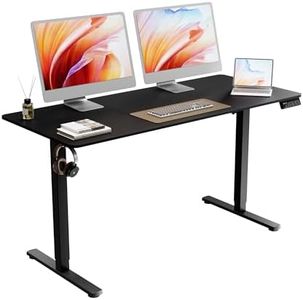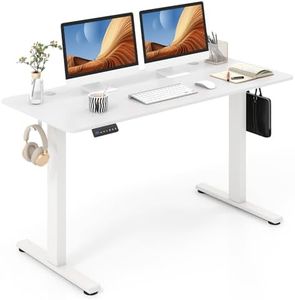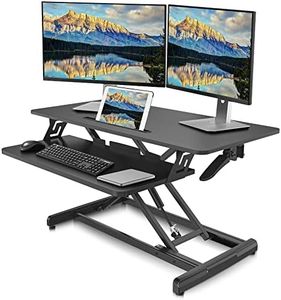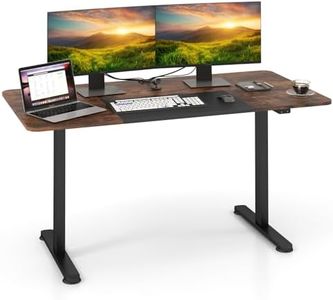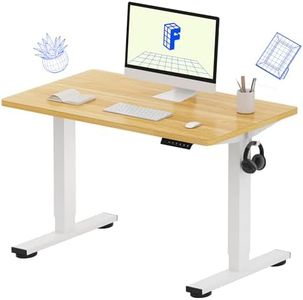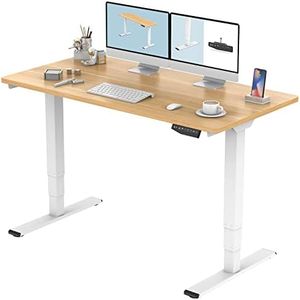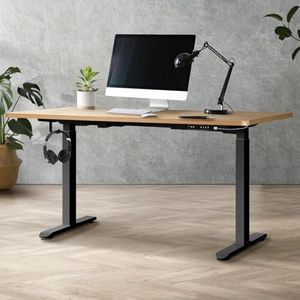We Use CookiesWe use cookies to enhance the security, performance,
functionality and for analytical and promotional activities. By continuing to browse this site you
are agreeing to our privacy policy
10 Best Stand Up Desks
From leading brands and best sellers available on the web.By clicking on a link to a third party's website, log data is shared with that third party.
Buying Guide for the Best Stand Up Desks
Choosing a stand-up desk is a great step toward improving your comfort and potentially your health while working. The key is to select a desk that matches your workspace, body measurements, and the way you plan to use it. Stand-up desks are designed for flexibility, so think about your routine: How much of your day do you plan to stand versus sit? Will you be using multiple monitors or heavy equipment? Consider not just function but also how the desk fits into your environment in terms of space and style. Understanding the core features will help you make a choice that keeps you comfortable, productive, and happy in your workspace.Height AdjustabilityHeight adjustability is all about how high or low the desk surface can go. This is important because a stand-up desk should fit your body whether you’re sitting or standing, helping you to maintain good posture and reducing strain. Some desks offer manual adjustment, while others use electric motors for smoother transitions. Manual desks usually adjust by lifting or turning a crank, while electric ones let you change heights with a button. If you plan to switch between sitting and standing often, electric adjustments are more convenient, but if you’ll mostly stick to one position or don’t mind a quick arm workout, manual options work too. Always check the desk’s minimum and maximum height range to make sure it will suit your height when sitting and standing—ideally, your elbows should be roughly at a 90-degree angle when working.
Weight CapacityWeight capacity tells you how much weight the desk can safely handle on its surface. This matters if you use multiple monitors, heavy desktop computers, or other equipment. A higher weight capacity means the desk won't wobble or get damaged under a full load. Light use typically involves a laptop and a monitor, so a desk with a lower weight limit is fine. If you use heavier or more equipment, look for models with higher capacity ratings, but always stack up what you own first to avoid overkill or shortfall.
Surface AreaSurface area is the size of the desktop itself. This determines how much space you’ll have for screens, a keyboard, documents, and other work items. For simple work—like using a laptop or small PC—a compact surface is enough and saves space. Larger surfaces, however, are better for multi-monitor setups or if you prefer spreading out your work materials. Think about what you keep on your desk daily and measure it out to see what surface size you really need.
StabilityStability refers to how steady the desk feels, especially in the raised position. Wobbly desks can be annoying and even make things feel less secure. Factors like frame design, the quality of materials, and the way the legs are made all affect stability. If you type a lot or lean on your desk, look for models known for stable frames, especially at full height. To test, gently shake potential models or read reviews about their steadiness.
Ease of AssemblyEase of assembly is how simple or complicated it is to put the desk together when it arrives. Some desks have clear instructions and require only basic tools, while others may be more complex and needing more hands or time. If you’re not a fan of DIY or want to set up quickly, look for desks with straightforward set-up processes, ideally with pre-drilled holes or minimal parts.
Noise Level During AdjustmentNoise level during adjustment refers to how loud the desk is when changing heights—especially for electric models. Quiet motors are better if you work in a shared space or get distracted easily. If noise is a concern for you, check for desks with quieter mechanisms or seek out user feedback on sound levels. Manual desks are usually quieter but can make clicking or cranking noises.
Cable Management FeaturesCable management features are in-built systems or accessories designed to keep your wires neat and out of the way. Good cable management helps your workspace look tidy and prevents tripping or snagging hazards, especially as you move the desk up or down. Some desks come with grommets, trays, or clips. If you have lots of gadgets or chargers, consider this to keep your work area organized.


